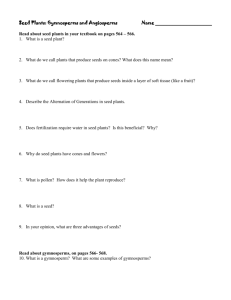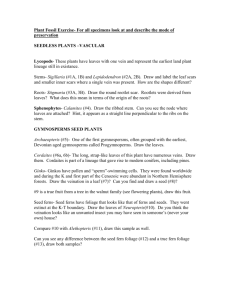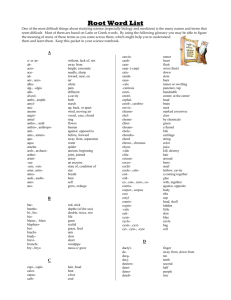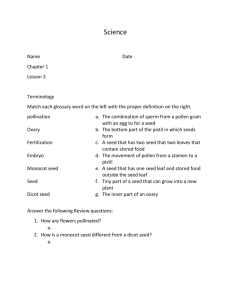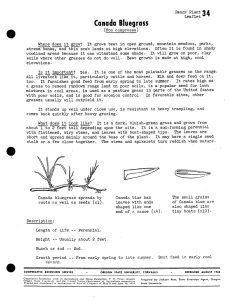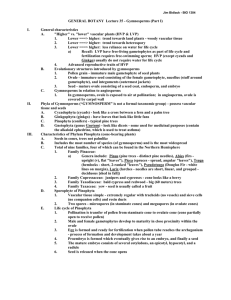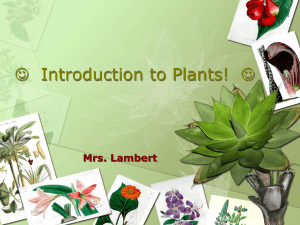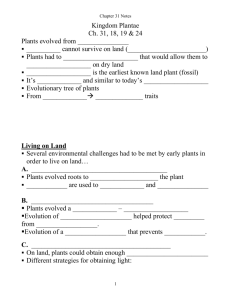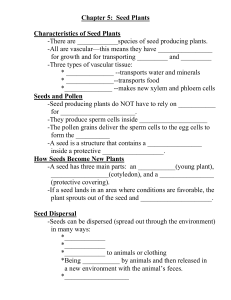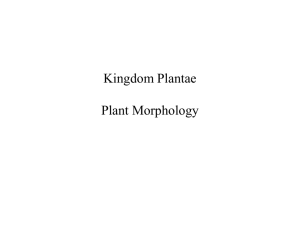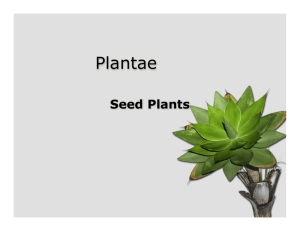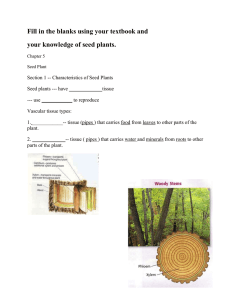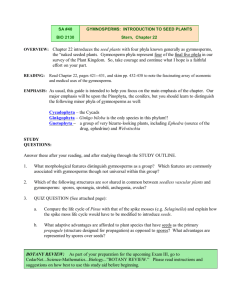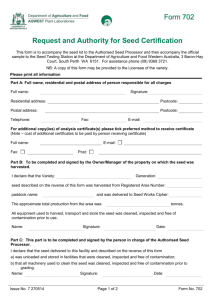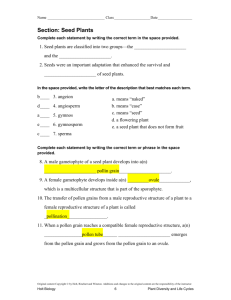Study Questions: Chapter 30 Fungi
advertisement
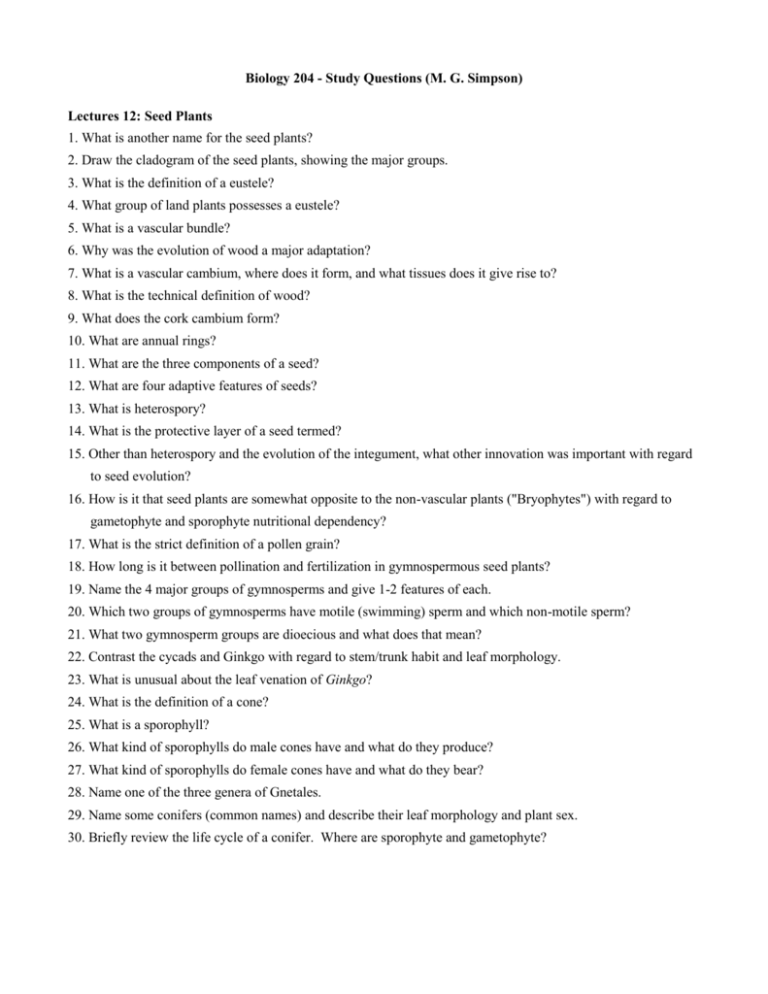
Biology 204 - Study Questions (M. G. Simpson) Lectures 12: Seed Plants 1. What is another name for the seed plants? 2. Draw the cladogram of the seed plants, showing the major groups. 3. What is the definition of a eustele? 4. What group of land plants possesses a eustele? 5. What is a vascular bundle? 6. Why was the evolution of wood a major adaptation? 7. What is a vascular cambium, where does it form, and what tissues does it give rise to? 8. What is the technical definition of wood? 9. What does the cork cambium form? 10. What are annual rings? 11. What are the three components of a seed? 12. What are four adaptive features of seeds? 13. What is heterospory? 14. What is the protective layer of a seed termed? 15. Other than heterospory and the evolution of the integument, what other innovation was important with regard to seed evolution? 16. How is it that seed plants are somewhat opposite to the non-vascular plants ("Bryophytes") with regard to gametophyte and sporophyte nutritional dependency? 17. What is the strict definition of a pollen grain? 18. How long is it between pollination and fertilization in gymnospermous seed plants? 19. Name the 4 major groups of gymnosperms and give 1-2 features of each. 20. Which two groups of gymnosperms have motile (swimming) sperm and which non-motile sperm? 21. What two gymnosperm groups are dioecious and what does that mean? 22. Contrast the cycads and Ginkgo with regard to stem/trunk habit and leaf morphology. 23. What is unusual about the leaf venation of Ginkgo? 24. What is the definition of a cone? 25. What is a sporophyll? 26. What kind of sporophylls do male cones have and what do they produce? 27. What kind of sporophylls do female cones have and what do they bear? 28. Name one of the three genera of Gnetales. 29. Name some conifers (common names) and describe their leaf morphology and plant sex. 30. Briefly review the life cycle of a conifer. Where are sporophyte and gametophyte?



